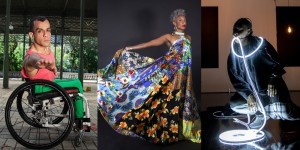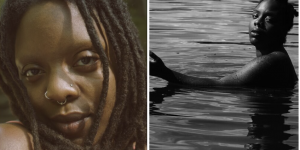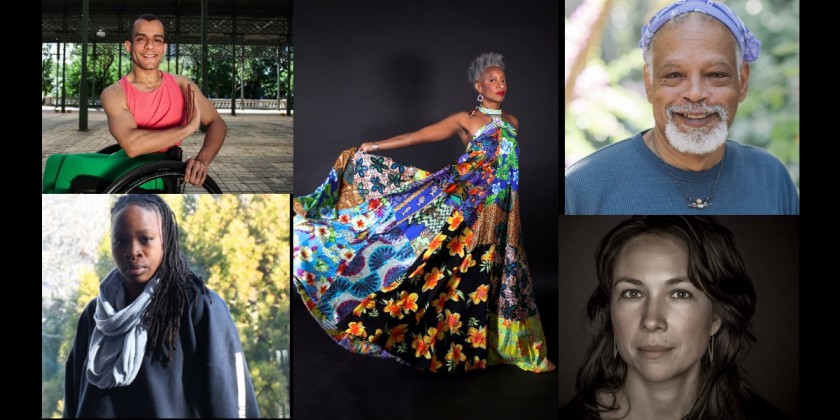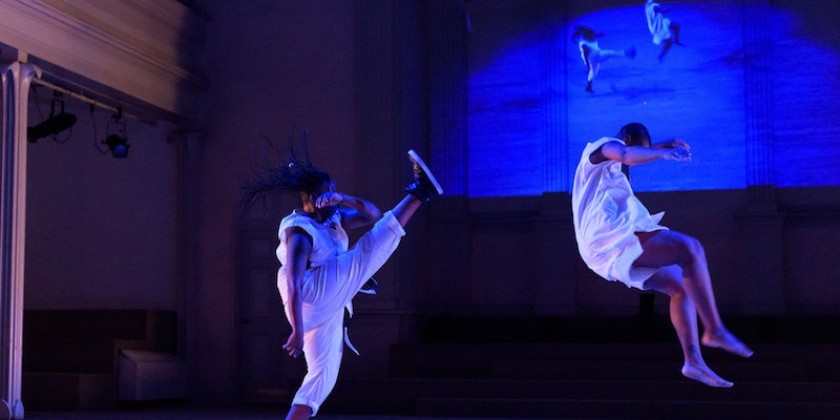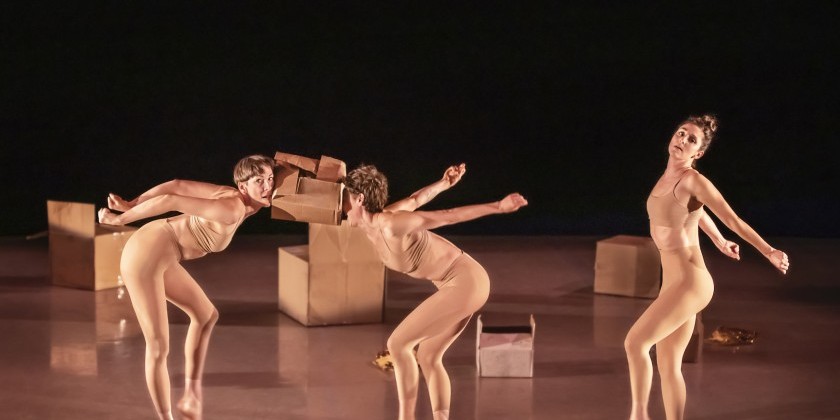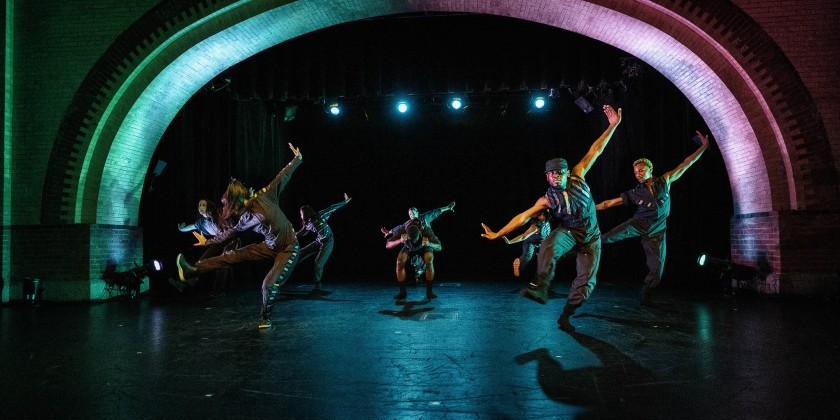IMPRESSIONS: Ni’Ja Whitson | The NWA Project’s "Oba Qween Baba King Baba"
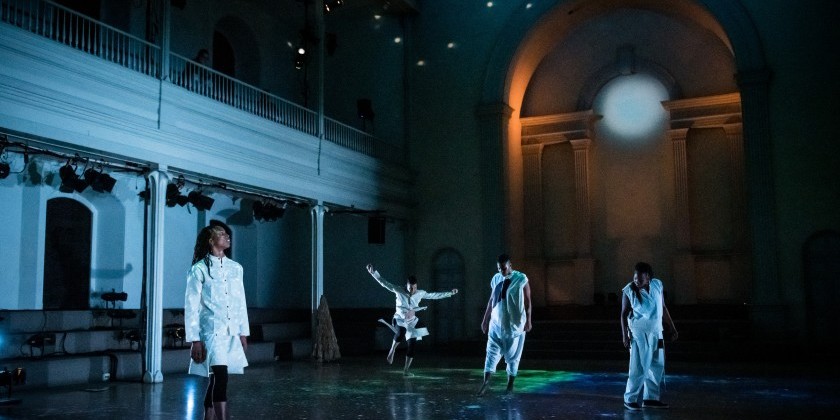
Co-commissioned by Danspace Project and Abrons Arts Center
March 29, 2019
Performers: Kirsten Davis, Shayla-Vie Jenkins, Paloma McGregor, Ni’Ja Whitson. Featuring Djola Branner
Musician/Composer: Douglas R. Ewart // Sound Design: Jeremy Toussaint-Baptiste, A.J. McClendon and Ni’Ja Whitson
Lighting Designer: Tuce Yusak // Video Design: Gil Sperling // Costume Designer: Jeanne Medina and Ni'Ja Whitson
As a result of the historical erasure that accompanied colonialism and enslavement, queer identities are often framed as a purely recent, white, Western, and secular construct. In an evening rich with references and imagery, Ni’Ja Whitson attempts to reclaim their queer black lineage by identifying and reimagining queer genders, sexualities, and spiritualities within the history of the African diaspora.
The performance begins with a stirring invocation delivered by Djola Branner. Several steps beyond more customary “acknowledgements” of the Lenape land, Branner speaks with emotional force about the other inhabitants of the area, those who have lived, worked, and died there since. He calls the land “a resting place” , and as he repeats the phrase, I hear “arresting place.” Whether or not the double-meaning is intended, I am primed to see connections between the violence of the past and present.
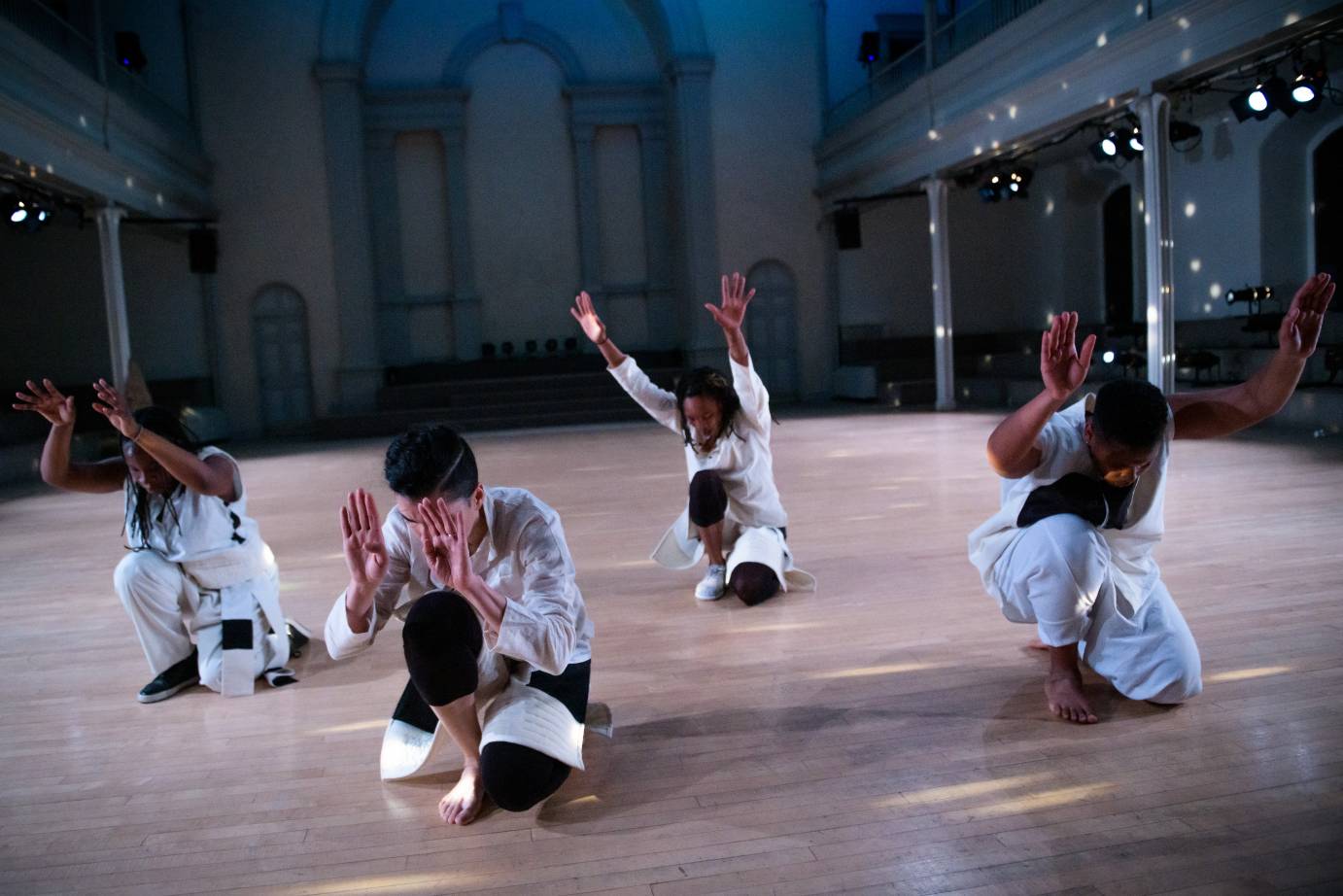
A gender-nonconforming practitioner of Yoruba spirituality, Whitson locates a history of nonbinary gender within Yoruba religious tradition by exploring the Orishas (Yoruba deities) as genderless figures. Fittingly, we first encounter the performers concealed in large, tent-like rafia garments, evocative of certain diasporic Yoruba dance rituals. Swaying, spinning and pulsating to hip hop beats, these beings are clearly alive, but they move without the guise of human form. We can assign no gender, race, or other identity to them.
The costumes perhaps reference portrayals of the Orisha Babalú-Ayé/Omolu--associated with disease and said to be covered to hide a disfigured body. Analogies to perceptions of queer and trans bodies as diseased or profane seem barely veiled.
Eventually, the performers step out from the garments, accompanied by a spoken declaration that it’s time to re-embrace the body. For the rest of the evening, they appear undisguised, aspiring to find the divine in themselves and themselves in the divine.
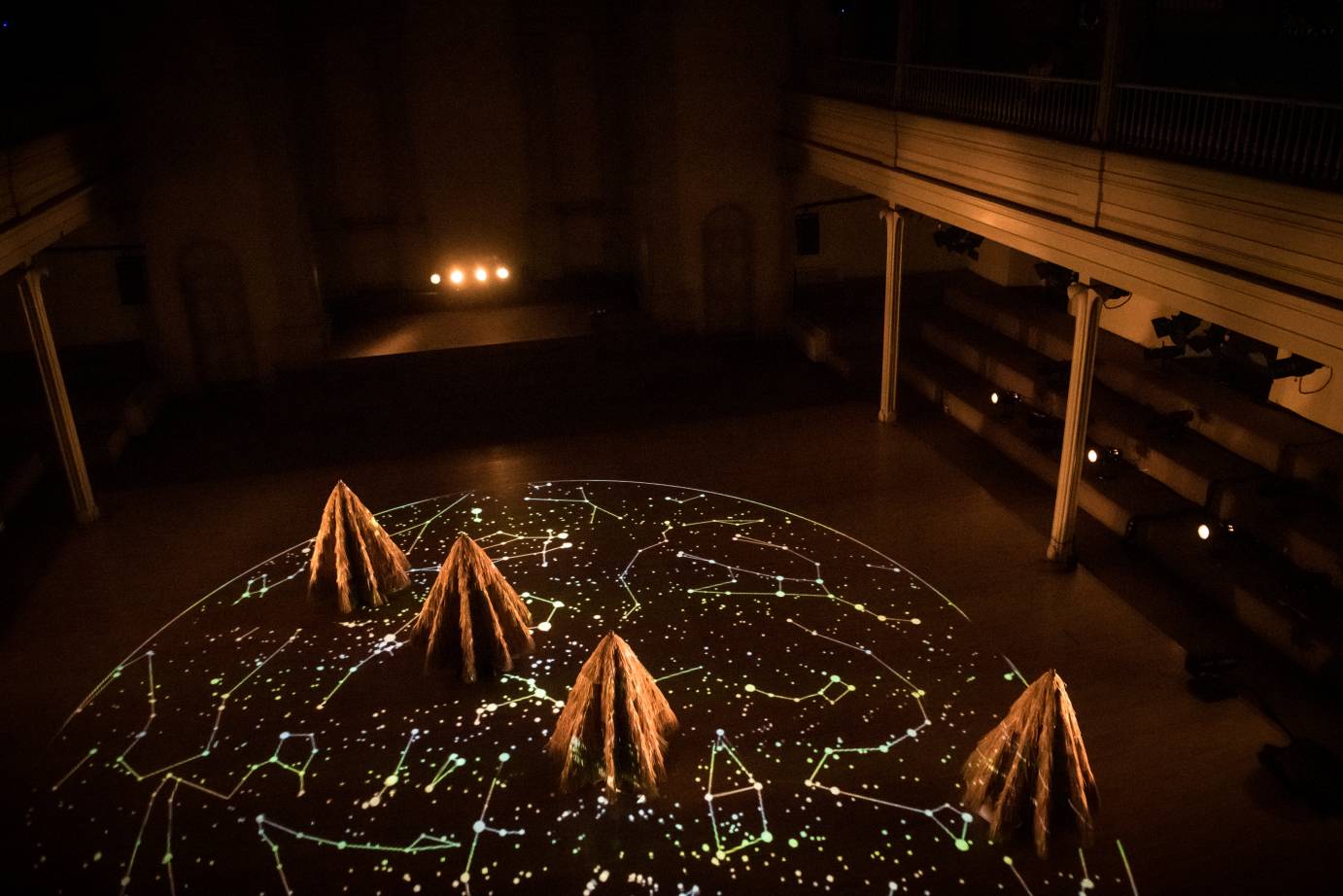
Moving through traditional, street, and contemporary forms to a soundtrack from across the African diaspora (including Yoruba drumming, jazz, hip-hop, house, reggae, gospel, and political speeches), a living collage traces common threads through a fractured history.
In addition to exploring their more distant spiritual past, Whitson confronts painfully recent histories. A monologue delivered by Whitson from the perspective of a father figure —a former Baptist preacher with memory loss, who still refers to his non-binary child as “daughter”— reminds us that our memories are limited and selective. Recounting milestones and care that his child neither remembers nor appreciates, the speaker questions why his own religious practice has been abandoned in his child’s spiritual journey.
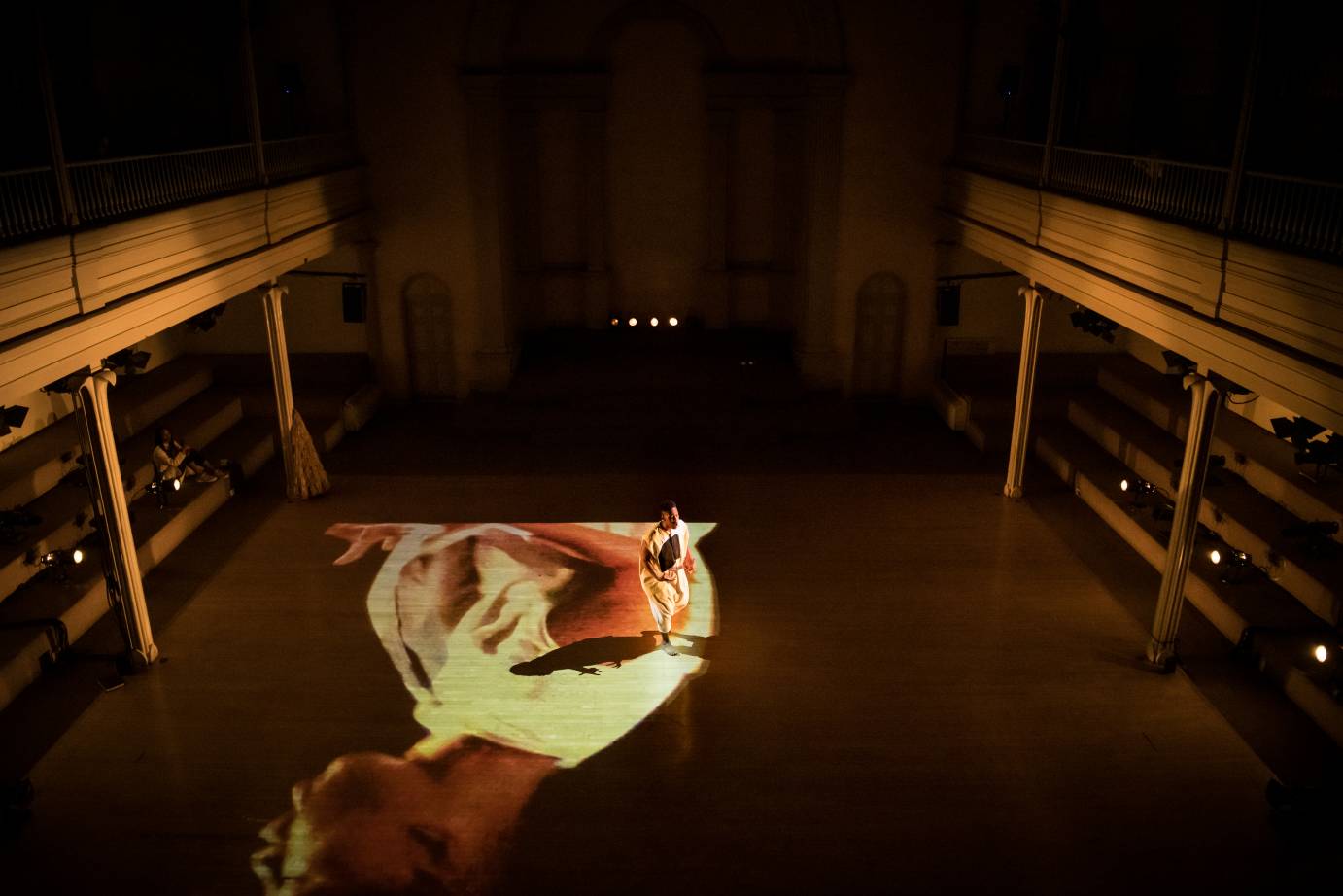
Indeed, Whitson engages heavily, though tensely, with Christian traditions. This comes through in a pointed selection of gospel music, and perhaps most potently in images of baptism. Whitson repeatedly immerses their face in a bowl of water, but gradually departs from the images of purity associated with the ritual. They begin to drink the water—introducing thirst and desire—while descending into sexually exposed positions on the floor. The vulgar and the sacred infiltrate each other until we can hardly tell the difference.
Such reflections are enhanced by the performance the location of St. Mark’s Church. I was seated in the balcony, along with good portion of the audience. That space, once assigned to slaves in many older churches, ironically offers an elevated and even omniscient perspective, including an excellent view of the constellations and cosmic landscapes projected upon the floor throughout the show. Against this background, the dancers appear to be drifting in space. Sometimes, I believe that I’m staring up into the heavens instead of peering down onto the floor. Momentarily, the hierarchy of space inverts.
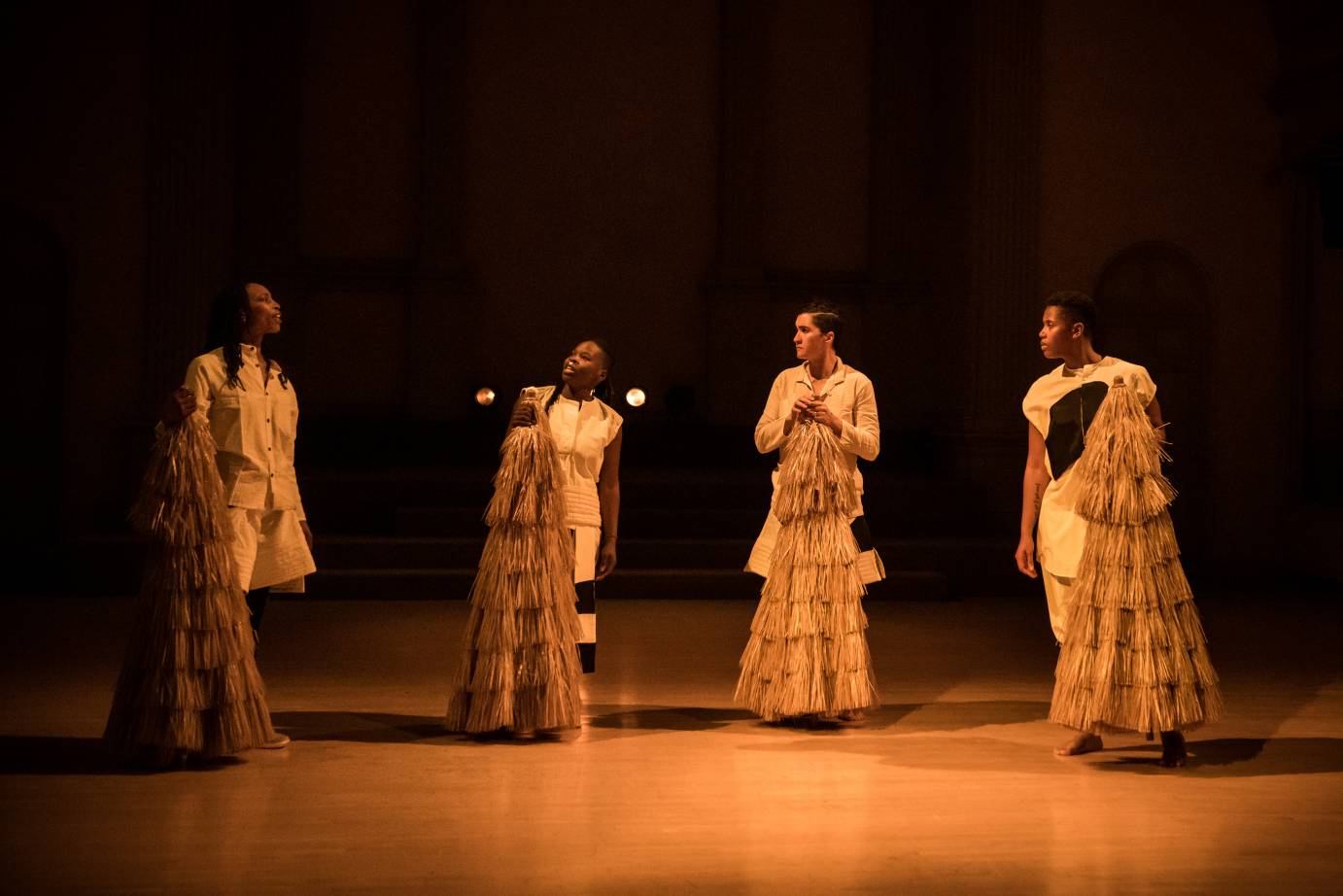
The floating image comes across especially in the final dance unison, a satisfyingly airy sequence of House footwork that inspires much of the audience to clap along and cheer. The work reminds us of the pain and conflict centered around marginalized bodies, but we are also reminded that these bodies contain beautiful complexity, joy, and groove.
The evening feels dense with research and references. For each image that imprints my mind, there are others that slip past. I crave more concrete access points to the artist’s intentions and research. Yet, given the themes of erasure, personal identity, and partial memory, I can accept that perhaps the work wasn’t meant to be understood completely or equally by all.






